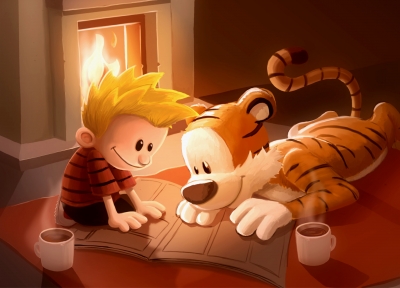
It’s been 35 years since Bill Watterson’s “Calvin and Hobbes” first debuted in the newspapers. Known as the last great newspaper comic strip”, it ran between November 18, 1985 and December 31, 1995.
What it’s about
“Calvin and Hobbes” follows the amusing adventures of Calvin, an adventurous six year-old: and Hobbes, his cynical stuffed tiger. Set in the suburban U.S., the strip depicts Calvin’s frequent flights of fancy and friendship with Hobbes. To Calvin, Hobbes is a living anthropomorphic tiger, while all the other characters see Hobbes as an inanimate stuffed toy. The series explores contemporary issues such as environmentalism, education, and philosophical quandaries.
Who was Bill Watterson?
William Boyd Watterson started drawing cartoons from the age of eight. An introvert, he preferred to spend time alone in his room drawing Charles Schults “Peanuts” comics inspired him to become a professional cartoonist. When he was in Class V, Watterson wrote a letter to Schulz. To Watterson’s surprise, Schulz responded! This greatly encouraged Watterson. In school, Watterson honed his skills by creating high school-themed superhero comics and contributing cartoons and art to the school newspaper and yearbook.
Who were Calvin and Hobbes?
Calvin was named after the Protestant reformer John Calvin and Hobbes after the social philosopher Thomas Hobbes. Watterson decided to name his characters after these social reformers as a tribute to the Kenyon College’s political science department, from where he graduated.
Drawing from life
Watterson incorporated elements of his life, interests, beliefs, and values into his work. Like Calvin. Watterson too likes cycling. The personality and appearance of Hobbes is based on Watterson’s cat Sprite.
Fun facts
Against merchandising
Watterson was against merchandising his comics because he felt it would compromise his creativity and cheapen his characters. For years, he fought against pressure from publishers to displaying “Calvin and Hobbes” images on commercially sold mugs, stickers, and T-shirts.
Recognition
Watterson was awarded the National Cartoonists Society’s Reuben Award in both 1986 and 1988, Watterson’s second Reuben win made him the youngest cartoonist to be so honoured, and only the sixth person to win twice.
The End
Watterson stopped drawing “Calvin and Hobbes” at the end of 1995 with a short statement to newspaper editors and his readers that he felt he had achieved all he could in the medium. In the years since the comic strip discontinued, he led a secluded life and avoided contact with the media.
Picture Credit : Google

